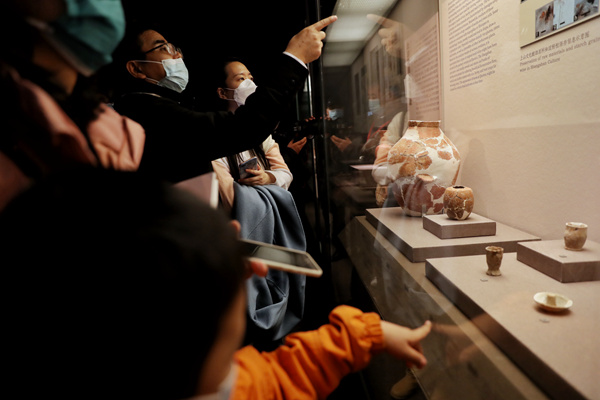

Now, at the National Museum of China in Beijing, visitors are presented with a vivid picture of the lives led by the people who once inhabited the sites, at the Rice, Origin, Enlightenment exhibition, which runs through Jan 21.
On show are some 200 objects unearthed at the Shangshan Culture sites, such as Shangshan and Qiaotou.
What has grabbed much of the attention is a carbonized grain of rice. It was excavated in 2006 at the Shangshan site, and measures around 3.7 millimeters in length.
Jiang Leping, the archaeologist at the Zhejiang Institute of Cultural Relics and Archaeology, who first discovered the Shangshan Culture, says that the discovery of rice grains means that people, after finding wild rice seeds, began to cultivate them for domestic use. This involves growing, reaping, processing and grinding to form "the initial stages of rice farming".